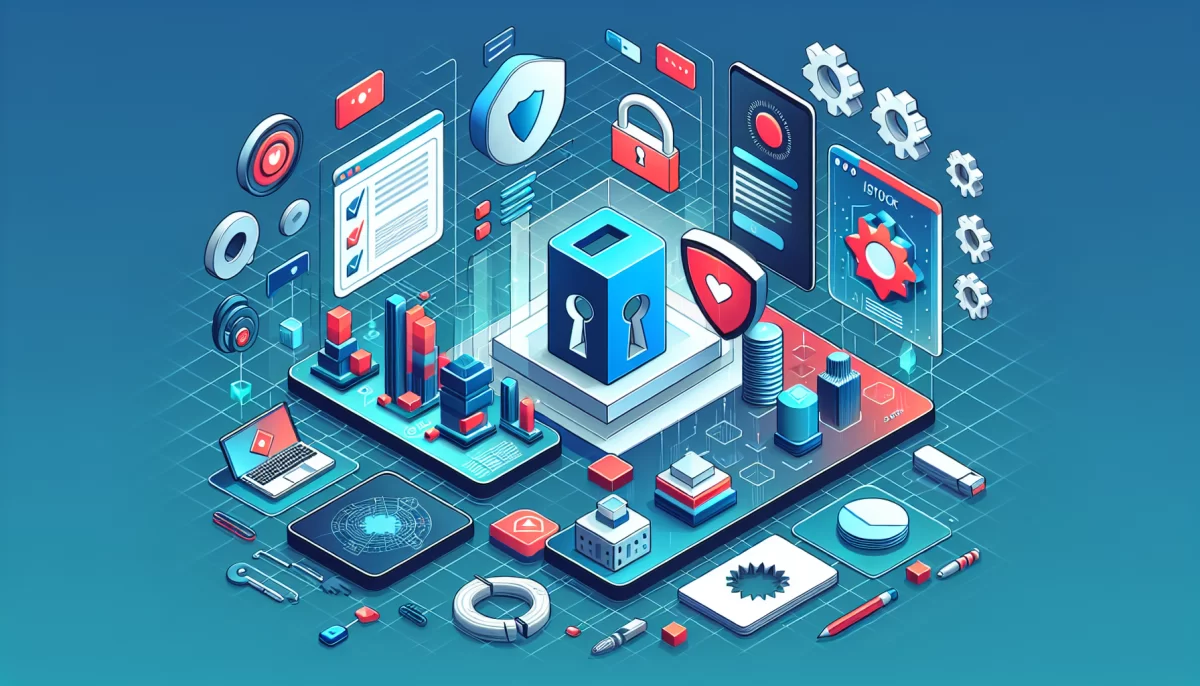Top 10 Dynamic Application Security Testing (DAST) Tools for 2025
In today’s rapidly evolving digital landscape, securing web applications against cyber threats is more critical than ever. Dynamic Application Security Testing (DAST) plays a vital role in identifying vulnerabilities by analyzing applications in their running state. This article explores the top DAST tools for 2025, highlighting their features, benefits, and why adopting a DAST-first approach can revolutionize your application security.
Understanding DAST: What It Is and How It Works
Dynamic Application Security Testing (DAST) is an automated cybersecurity testing method that evaluates running web applications to detect exploitable security flaws. Unlike Static Application Security Testing (SAST), which examines application source code before deployment, DAST simulates real-world hacker attacks by probing inputs and analyzing responses from live applications. This black-box testing approach does not require access to the source code, making it highly versatile across diverse technologies and frameworks.
Key Advantages of DAST
- Technology-agnostic testing: Effective across various programming languages and web frameworks.
- Realistic vulnerability detection: Identifies vulnerabilities based on actual exploitability rather than theoretical risks.
- Automated scanning: Enables regular and fast security assessments without extensive manual input.
For small and mid-sized businesses (SMBs), prioritizing ease of use, automation, and speed in DAST tools is essential due to limited security resources. DAST scanners help find critical vulnerabilities like SQL Injection (SQLi), Cross-Site Scripting (XSS), authentication issues, and configuration errors — all common attack vectors used by cybercriminals.
Why a DAST-First Strategy Enhances Application Security
Application security programs often rely heavily on SAST and Software Composition Analysis (SCA) tools, which, while valuable, come with challenges such as overwhelming false positives and non-actionable alerts. Such issues can lead to inefficiencies and security fatigue among development and security teams.
Common Challenges with SAST and SCA
- False positives: SAST and SCA frequently flag vulnerabilities that may not be exploitable, wasting time and effort.
- Lack of exploitability confirmation: These tools do not demonstrate whether a vulnerability can be exploited in real-world scenarios.
- Developer burnout: High volumes of alerts can cause important warnings to be ignored, increasing risk.
- Poor prioritization: Without risk-based insights, teams struggle to focus on the most pressing security issues.
Conversely, a DAST-first approach addresses these pain points by focusing on vulnerabilities visible to attackers, confirmed through automated exploitation simulations. This leads to higher accuracy, quicker remediation, and efficient security workflows.
- Attacker’s perspective: DAST assesses live applications exactly as hackers would, providing actionable insights.
- Proof-based validation: Ensures flagged vulnerabilities are verifiable, cutting down false positives.
- Risk prioritization: Enables focusing on vulnerabilities with the greatest real-world impact.
- Faster time-to-fix: Prioritized alerts drive quick and effective remediation efforts.
Top 10 DAST Tools for 2025
1. Invicti: Leading DAST-First Application Security Platform
Invicti sets the benchmark for enterprise-grade, DAST-first platforms. Its advanced automation includes proprietary proof-based scanning that achieves a remarkable 99.98% accuracy rate, effectively eliminating false positives. Features such as Predictive Risk Scoring provide context-aware prioritization, empowering teams to focus on high-risk vulnerabilities first. Compatibility with modern web technologies, including SPAs and all major APIs (REST, SOAP, GraphQL, gRPC), makes Invicti highly versatile.
Additionally, Invicti integrates seamlessly with over 50 tools, including GitHub, Jira, and Jenkins, facilitating smooth CI/CD pipeline incorporation and DevSecOps workflows. The platform also combines DAST with Interactive Application Security Testing (IAST), Static Application Security Testing (SAST), and Container Security, providing comprehensive AppSec coverage.
2. Acunetix by Invicti: Ideal DAST Solution for SMBs
Designed with smaller companies and mid-sized enterprises in mind, Acunetix offers an affordable, fast, and automated DAST-only scanner. It incorporates Invicti’s proof-based scanning technology and risk prioritization features, making it an excellent entry point for organizations starting their application security journey. Its ease of deployment and focus on automation simplify adoption for teams with limited cybersecurity resources.
3. PortSwigger Burp Suite Professional
Burp Suite is widely recognized among penetration testers for its advanced capabilities and flexibility. While it offers some automation, it excels as a manual testing tool that can be deeply customized using plugins. This makes it ideal for businesses that require detailed security assessments and have skilled testers to interpret results and craft targeted exploits.
4. Checkmarx DAST Tools
Checkmarx integrates dynamic scanning with static and interactive testing in a unified security suite. Leveraging Checkmarx Security Intelligence, it enhances vulnerability detection accuracy and prioritization. This all-encompassing approach supports organizations seeking comprehensive coverage, especially when combined with SAST and SCA tools.
5. Rapid7 InsightAppSec
A cloud-native DAST solution, InsightAppSec supports modern web applications and API security assessments. It features dynamic attack simulations and integrates with SIEM tools, boosting threat monitoring and incident response. Its automation supports DevOps environments, enabling continuous security testing.
6. HCL AppScan
HCL AppScan offers automated vulnerability assessments tailored toward smaller businesses that need straightforward, effective scanning without complex setup. It provides actionable security insights in an easy-to-use interface, making it accessible to teams with limited expertise.
7. OpenText Fortify WebInspect
Fortify WebInspect delivers extensive and advanced scanning capabilities suitable for enterprises with complex application security requirements. While it may be more advanced than what SMBs require, its support for API testing and broad compatibility make it a strong contender where deep analysis is necessary.
8. Black Duck DAST Solutions
Formerly Synopsys, Black Duck offers two DAST tools: Continuous Dynamic and Polaris fAST Dynamic. Continuous Dynamic automates vulnerability scanning and analysis for web applications, while Polaris fAST Dynamic focuses on streamlining testing workflows, aiding in faster, more accurate assessments.
9. Veracode Dynamic Analysis
Veracode provides automated continuous scanning integrated with CI/CD pipelines, suitable for enterprises with strict compliance obligations. Its solution emphasizes ongoing protection through regular testing and vulnerability management.
10. ZAP by Checkmarx (formerly OWASP ZAP)
ZAP is a popular open-source DAST tool favored by organizations that have the technical expertise to manually configure scans and triage results. While it lacks automation features found in commercial tools, it offers tremendous flexibility through plugins and customization, often employed by penetration testers for tailored security assessments.
Benefits of a DAST-First Security Strategy for SMBs
Adopting DAST as a foundational security testing method offers several important advantages, particularly for small and mid-sized businesses.
- Filter out noise: Focuses on exploitable vulnerabilities seen by attackers, providing an accurate security posture.
- Actionable findings: Proof-based validation ensures issues are real, minimizing wasted effort in verifying false positives.
- Efficient resource use: Prioritizes efforts on the most critical vulnerabilities, maximizing security ROI.
- Technology independence: Tests web applications regardless of their underlying programming language or technology stack.
- Continuous security: Enables integration into both development lifecycle and production environments for ongoing protection.
- DevSecOps integration: Fits seamlessly into modern CI/CD pipelines and automated workflows.
Essential Features to Consider When Choosing a DAST Tool
When evaluating DAST solutions, SMBs should look for the following critical features:
- Automated proof of exploit: Confirms vulnerabilities to ensure maximum accuracy and minimize false alerts.
- Predictive risk scoring: Prioritizes remediation based on the potential real-world impact of vulnerabilities.
- Seamless workflow integrations: Compatible with common development tools (e.g., GitHub, Jira) and CI/CD systems.
- Robust API security testing: Supports contemporary API formats and secure authentication mechanisms.
- DevSecOps readiness: Easily integrates with automated pipelines and development processes.
- Clear remediation guidance: Provides detailed, developer-friendly vulnerability reports for efficient fixes.
Conclusion: Prioritize DAST for Real Risk Reduction
In cybersecurity, it’s not about finding every vulnerability but identifying those that pose real threats and addressing them decisively. A DAST-first approach enables organizations to find, validate, and remediate exploitable vulnerabilities before attackers can exploit them.
Key considerations for any security program include:
- Are vulnerabilities prioritized based on actual risk across the attack surface?
- Can potential exploits be validated rather than accepted as mere alerts?
- Does your process focus on fixing real issues instead of responding to overwhelming reports?
- Can your security approach effectively encompass both Application Security (AppSec) and broader Information Security (InfoSec) needs?
For organizations building or maturing their security programs, starting with a DAST-first strategy is a pragmatic and effective choice. It acts as both a reliable validator and force multiplier for other security testing approaches, helping organizations build resilient defenses against evolving cyber threats.



